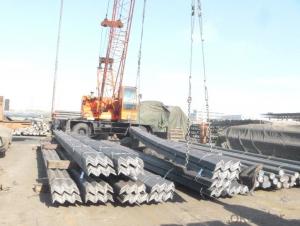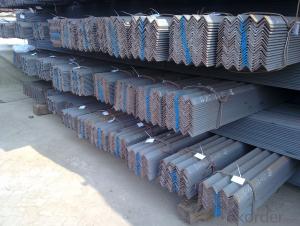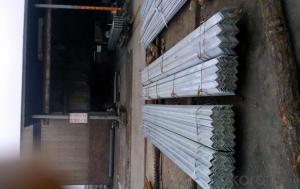hot rolled angle steel
- Loading Port:
- China Main Port
- Payment Terms:
- TT OR LC
- Min Order Qty:
- -
- Supply Capability:
- -
OKorder Service Pledge
OKorder Financial Service
You Might Also Like
Product Description:
1.Grade: SS200,300,400 series
2.Size: 25×25×3 mm-100×100×10mm
3.Process: HRAP
4. Length: 2-6m
5. Shape: Equal
6. Delivery: within 20 days
7. MOQ: 1 ton
8. Certificate: ISO 9001:2008, SGS
9. Package:Standard Export Packing, or put into wooden boxes according to your requirement
10. Application: Construction, Marine, Industry and so on
Name | Stainless Steel Angles | ||||||
Standard | ASTM A554, A312, A249, A269 and A270 | ||||||
Material Grade | 304,316,201,202, 316L,430 | ||||||
Length | 6m or as customers' request | ||||||
Tolerance | a) thickness: +/-0. 15mm | ||||||
| |||||||
b) Length:+/-4. 5mm - 0mm | |||||||
Surface | 180G, 320G, 400G Satin / Hairline(Matt Finish, Brush, Dull Finish) 400G, 500G, 600G or 800G Mirror finish | ||||||
Application | Decoration construction, upholstery, industry instruments | ||||||
Test | Squash test, Extended test, Water pressure test, Crystal rot test, Heat treatment, NDT | ||||||
Chemical Composition of Material |
Composition
Material | 201 | 202 | 304 | 316L | 430 | |
C | ≤0.15 | ≤0.15 | ≤0.08 | ≤0.08 | ≤0.12 | | |
Si | ≤1.00 | ≤1.00 | ≤1.00 | ≤1.00 | ≤1.00 | | |
Mn | 5.5-7.5 | 7.5-10 | ≤2.00 | ≤2.00 | ≤1.00 | | |
P | ≤0.06 | ≤0.06 | ≤0.045 | ≤0.045 | ≤0.040 | | |
S | ≤0.03 | ≤0.03 | ≤0.030 | ≤0.030 | ≤0.030 | | |
Cr | 16-18 | 17-19 | 18-20 | 16-18 | 16-18 | | |
Ni | 3.5-5.5 | 4-6 | 8-10.5 | 10-14 |
| | |
Mo |
|
|
| 2.0-3.0 |
| | |
Mechanical Property | Material Item | 201 | 202 | 304 | 316L | | |
Tensile Strength | ≥535 | ≥520 | ≥520 | ≥520 | | ||
Yield Strength | ≥245 | ≥205 | ≥205 | ≥205 | | ||
Extension | ≥30% | ≥30% | ≥35% | ≥35% | | ||
Hardness (HV) | <253 | <253 | <200 | <200 | | ||
- Q:What are the standard lengths for steel angles?
- The standard lengths for steel angles vary depending on the manufacturer and the specific requirements of a project. However, there are some commonly available standard lengths for steel angles. These include 20 feet, 30 feet, and 40 feet. It is important to note that steel angles can also be cut to custom lengths based on the needs of a particular application.
- Q:Can steel angles be used for modular construction?
- Yes, steel angles can be used for modular construction. Steel angles provide structural support and can be easily fabricated and assembled to create modular components in construction projects. They are commonly used for framing, bracing, and connecting modular units, providing strength and stability to the overall structure.
- Q:Are steel angles suitable for conveyor systems?
- Yes, steel angles are suitable for conveyor systems. They provide strength, stability, and durability, making them an ideal choice for supporting and guiding conveyor belts. Steel angles can withstand heavy loads, resist corrosion, and offer flexibility in designing conveyor structures.
- Q:Can steel angles be used for supporting mechanical equipment?
- Indeed, mechanical equipment can be effectively supported using steel angles. In construction and engineering endeavors, steel angles are frequently employed owing to their robustness, resilience, and adaptability. They furnish a steady and inflexible support framework for a wide array of mechanical equipment such as weighty machinery, conveyors, and support frames. Notably, steel angles are acclaimed for their capacity to bear weight, rendering them optimal for furnishing structural support in industrial settings. Furthermore, their L-shaped configuration facilitates effortless equipment installation and attachment. All in all, steel angles are a trustworthy and prevalent choice for bolstering mechanical equipment due to their strength, durability, and user-friendliness.
- Q:Can steel angles be used in outdoor or exposed environments?
- Yes, steel angles can be used in outdoor or exposed environments. Steel angles are commonly used in construction and engineering projects and are known for their durability and strength. They are often galvanized or coated with protective finishes to prevent rust and corrosion, making them suitable for outdoor use. Additionally, steel angles can withstand various weather conditions, making them a reliable choice for outdoor or exposed environments.
- Q:100 x 100 x 10 equal angle steel, per meter weight?
- The angle iron can be made up of different force components according to the different structure, and can also be used as the connecting piece between the components. Widely used in a variety of architectural and engineering structures, such as beams, bridges, towers, hoisting and conveying machinery, ships, industrial furnace, reaction tower, container frame and warehouse shelves steel base.
- Q:Can steel angles be used as reinforcement in concrete slabs?
- Concrete slabs can indeed benefit from the use of steel angles for reinforcement. These L-shaped structural steel components, commonly utilized in construction due to their durability and strength, can significantly enhance the load-bearing capacity of a concrete slab. Furthermore, they help prevent any potential cracks or structural failure. Specifically, steel angles provide added support and strength to the concrete, especially in areas where heavy loads or concentrated forces are anticipated. By incorporating steel angles as reinforcement, the concrete slab becomes more resistant to bending, tension, and shearing forces, resulting in a structurally sound slab that can withstand higher loads. It is crucial to ensure the proper design and placement of steel angles, following the guidelines and specifications provided by structural engineers, to guarantee the optimal reinforcement and performance of the concrete slab.
- Q:Are steel angles prone to warping or twisting?
- Steel angles are generally not prone to warping or twisting. They are widely used for various structural and manufacturing purposes due to their excellent strength and stability. Steel angles are produced through a hot-rolling process, which involves heating the steel billet to a high temperature and then shaping it into the desired angle shape. This process helps to ensure the angles retain their shape and structural integrity. However, it is important to note that under extreme heat or stress conditions, steel angles can potentially warp or twist. This is more likely to occur if the steel angles are exposed to high temperatures, uneven heating or cooling, excessive loads, or improper installation. In such cases, the integrity of the angles may be compromised, leading to deformation. To minimize the risk of warping or twisting, it is crucial to follow proper handling and installation procedures, including ensuring even distribution of loads and avoiding excessive heat exposure. Additionally, using high-quality steel angles from reputable manufacturers and conducting regular inspections can help identify any potential issues early on and prevent further damage. Overall, while steel angles are generally resistant to warping or twisting, it is important to consider the specific conditions and factors that may affect their stability and take appropriate measures to ensure their long-term structural integrity.
- Q:Can steel angles be used in seismic applications?
- Yes, steel angles can be used in seismic applications. Steel angles are commonly used in seismic applications due to their high strength and ductility properties. They are often used in the construction of steel moment frames and bracing systems, which are designed to resist lateral forces caused by seismic events. Steel angles are particularly effective in providing structural support and stability in areas prone to earthquakes. They can be used as diagonal braces, gusset plates, or stiffeners to enhance the seismic performance of buildings and structures. Additionally, steel angles can be easily fabricated and installed, making them a cost-effective choice for seismic applications.
- Q:Are steel angles fire resistant?
- Yes, steel angles are generally considered to be fire resistant. Steel is an inherently non-combustible material and has a high melting point, making it able to withstand high temperatures during a fire. Steel angles, which are L-shaped structural members, are commonly used in construction and engineering applications due to their strength and durability. In fire conditions, steel angles can maintain their structural integrity and resist deformation, which is crucial for the safety of a building or structure. However, it is important to note that the fire resistance of steel angles can be affected by factors such as the size and thickness of the angles, the type of fire protection measures applied, and the duration and intensity of the fire. Fire protection measures like fire-resistant coatings, fire barriers, and fireproofing materials can be used to enhance the fire resistance of steel angles and improve the overall fire safety of a structure.
1. Manufacturer Overview |
|
|---|---|
| Location | |
| Year Established | |
| Annual Output Value | |
| Main Markets | |
| Company Certifications | |
2. Manufacturer Certificates |
|
|---|---|
| a) Certification Name | |
| Range | |
| Reference | |
| Validity Period | |
3. Manufacturer Capability |
|
|---|---|
| a)Trade Capacity | |
| Nearest Port | |
| Export Percentage | |
| No.of Employees in Trade Department | |
| Language Spoken: | |
| b)Factory Information | |
| Factory Size: | |
| No. of Production Lines | |
| Contract Manufacturing | |
| Product Price Range | |
Send your message to us
hot rolled angle steel
- Loading Port:
- China Main Port
- Payment Terms:
- TT OR LC
- Min Order Qty:
- -
- Supply Capability:
- -
OKorder Service Pledge
OKorder Financial Service
Similar products
New products
Hot products
Hot Searches
Related keywords




























